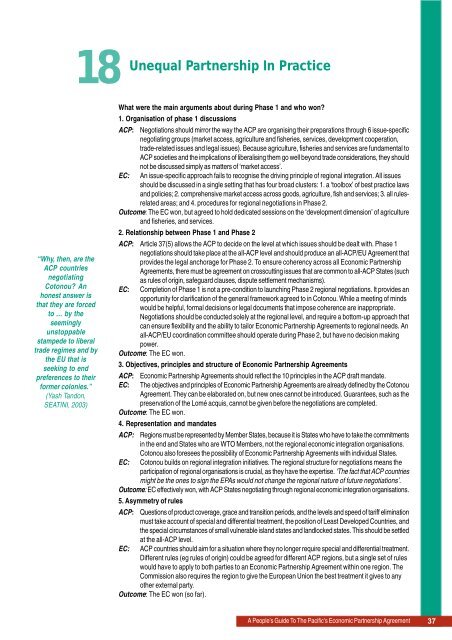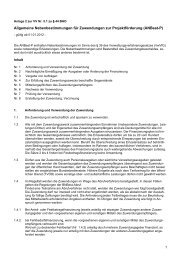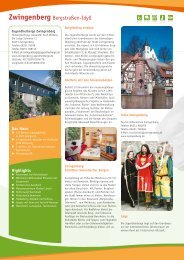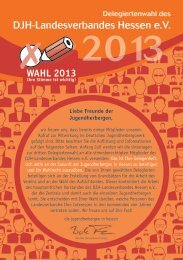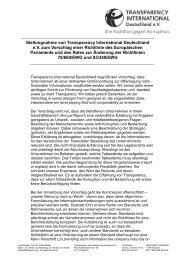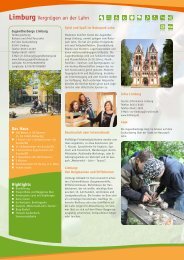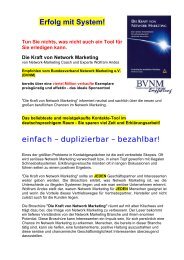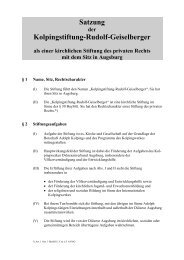REPA Booklet - Stop Epa
REPA Booklet - Stop Epa
REPA Booklet - Stop Epa
Create successful ePaper yourself
Turn your PDF publications into a flip-book with our unique Google optimized e-Paper software.
18<br />
Unequal Partnership In Practice<br />
“Why, then, are the<br />
ACP countries<br />
negotiating<br />
Cotonou? An<br />
honest answer is<br />
that they are forced<br />
to … by the<br />
seemingly<br />
unstoppable<br />
stampede to liberal<br />
trade regimes and by<br />
the EU that is<br />
seeking to end<br />
preferences to their<br />
former colonies.”<br />
(Yash Tandon,<br />
SEATINI, 2003)<br />
What were the main arguments about during Phase 1 and who won?<br />
1. Organisation of phase 1 discussions<br />
ACP: Negotiations should mirror the way the ACP are organising their preparations through 6 issue-specific<br />
negotiating groups (market access, agriculture and fisheries, services, development cooperation,<br />
trade-related issues and legal issues). Because agriculture, fisheries and services are fundamental to<br />
ACP societies and the implications of liberalising them go well beyond trade considerations, they should<br />
not be discussed simply as matters of ‘market access’.<br />
EC: An issue-specific approach fails to recognise the driving principle of regional integration. All issues<br />
should be discussed in a single setting that has four broad clusters: 1. a ‘toolbox’ of best practice laws<br />
and policies; 2. comprehensive market access across goods, agriculture, fish and services; 3. all rulesrelated<br />
areas; and 4. procedures for regional negotiations in Phase 2.<br />
Outcome: The EC won, but agreed to hold dedicated sessions on the ‘development dimension’ of agriculture<br />
and fisheries, and services.<br />
2. Relationship between Phase 1 and Phase 2<br />
ACP: Article 37(5) allows the ACP to decide on the level at which issues should be dealt with. Phase 1<br />
negotiations should take place at the all-ACP level and should produce an all-ACP/EU Agreement that<br />
provides the legal anchorage for Phase 2. To ensure coherency across all Economic Partnership<br />
Agreements, there must be agreement on crosscutting issues that are common to all-ACP States (such<br />
as rules of origin, safeguard clauses, dispute settlement mechanisms).<br />
EC: Completion of Phase 1 is not a pre-condition to launching Phase 2 regional negotiations. It provides an<br />
opportunity for clarification of the general framework agreed to in Cotonou. While a meeting of minds<br />
would be helpful, formal decisions or legal documents that impose coherence are inappropriate.<br />
Negotiations should be conducted solely at the regional level, and require a bottom-up approach that<br />
can ensure flexibility and the ability to tailor Economic Partnership Agreements to regional needs. An<br />
all-ACP/EU coordination committee should operate during Phase 2, but have no decision making<br />
power.<br />
Outcome: The EC won.<br />
3. Objectives, principles and structure of Economic Partnership Agreements<br />
ACP: Economic Partnership Agreements should reflect the 10 principles in the ACP draft mandate.<br />
EC: The objectives and principles of Economic Partnership Agreements are already defined by the Cotonou<br />
Agreement. They can be elaborated on, but new ones cannot be introduced. Guarantees, such as the<br />
preservation of the Lomé acquis, cannot be given before the negotiations are completed.<br />
Outcome: The EC won.<br />
4. Representation and mandates<br />
ACP: Regions must be represented by Member States, because it is States who have to take the commitments<br />
in the end and States who are WTO Members, not the regional economic integration organisations.<br />
Cotonou also foresees the possibility of Economic Partnership Agreements with individual States.<br />
EC: Cotonou builds on regional integration initiatives. The regional structure for negotiations means the<br />
participation of regional organisations is crucial, as they have the expertise. ‘The fact that ACP countries<br />
might be the ones to sign the EPAs would not change the regional nature of future negotiations’.<br />
Outcome: EC effectively won, with ACP States negotiating through regional economic integration organisations.<br />
5. Asymmetry of rules<br />
ACP: Questions of product coverage, grace and transition periods, and the levels and speed of tariff elimination<br />
must take account of special and differential treatment, the position of Least Developed Countries, and<br />
the special circumstances of small vulnerable island states and landlocked states. This should be settled<br />
at the all-ACP level.<br />
EC: ACP countries should aim for a situation where they no longer require special and differential treatment.<br />
Different rules (eg rules of origin) could be agreed for different ACP regions, but a single set of rules<br />
would have to apply to both parties to an Economic Partnership Agreement within one region. The<br />
Commission also requires the region to give the European Union the best treatment it gives to any<br />
other external party.<br />
Outcome: The EC won (so far).<br />
A People’s Guide To The Pacific’s Economic Partnership Agreement 37


